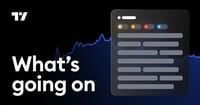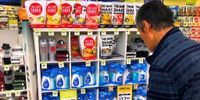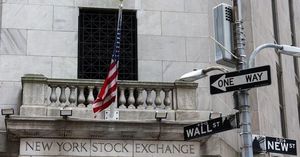Australia's inflation rate held steady at 2.4% in the first quarter of 2025, remaining unchanged from the previous quarter, according to data released by the Australian Bureau of Statistics (ABS) on April 30. This figure, slightly above the market expectations of 2.3%, marks the lowest inflation level since the first quarter of 2021.
Despite the stability in the headline inflation rate, the dynamics within the economy reveal a mixed bag of price changes. Significant price increases were noted in education, housing, and food and non-alcoholic beverages. Specifically, education costs surged by 5.2%, housing prices rose by 1.7%, and food and non-alcoholic beverages saw an increase of 1.2%. However, these rises were countered by declines in recreation and culture, which fell by 1.6%, and furnishings, household equipment, and services, which dropped by 0.9%.
Core inflation, a critical measure that excludes volatile items, also showed signs of easing. The trimmed mean inflation rate decreased to 2.9%, down from 3.3% in the previous quarter, thus falling back within the Reserve Bank of Australia's (RBA) target range of 2% to 3%. This marks the first time since late 2021 that core inflation has returned to this target band.
Sean Langcake, head of macroeconomic forecasting at Oxford Economics, commented on the recent inflation data, stating, "Underlying inflation measures paint a better picture, with trimmed-mean inflation falling back to within the RBA's target range." He projected that this decline would allow the RBA to support the economy through potential shocks, forecasting a 25-basis point cut in May and two more cuts in the latter half of the year.
The RBA has already made moves to adjust its monetary policy, cutting interest rates to 4.1% from 4.35%—the highest level since December 2011—earlier this year. These changes come as Australia gears up for a significant federal election on May 3, 2025, where all 150 seats in the House of Representatives and 40 of the 76 Senate seats are up for grabs. Current Prime Minister Anthony Albanese's Labor Party holds a slight lead over the opposition, according to a Newspoll reported by Reuters.
In light of the upcoming election, Treasurer Jim Chalmers highlighted the importance of these inflation figures, stating, "The market is expecting somewhere between four and five additional interest rate cuts this year, and if that eventuated, that would deliver hundreds of dollars every month to Australians with a mortgage." This sentiment reflects a broader expectation from economists and investors that the RBA will continue to ease monetary policy in response to the evolving economic landscape.
Electricity prices played a significant role in the inflation narrative, jumping 16.3% in the March quarter as government rebates on power bills expired. While this spike contributed to the overall inflation figures, it is noteworthy that electricity prices remain down 12% compared to a year earlier. This fluctuation highlights the complexities of managing inflation in the context of government interventions and market dynamics.
Moreover, the ABS noted that average rental costs increased by 5.5% compared to the previous year, although this was an improvement from the nearly 8% rise seen in early 2024. The ongoing challenges in the housing market continue to be a pivotal factor in inflationary pressures, with costs for new dwelling construction rising by 1.4%—the lowest increase since June 2021.
Despite these pressures, the RBA has expressed concerns regarding the strength of the labor market, which could potentially stoke inflationary pressures moving forward. However, the main measure of wage growth has been slowing, even as employment remains robust and the unemployment rate holds at a historical low of 4.1%.
As Australia approaches the election, the economic landscape remains a critical topic for voters. Both major parties are keenly aware of the implications of inflation and interest rates on household budgets. The Labor Party, under Albanese, is emphasizing its credentials in managing inflation, while the opposition seeks to capitalize on any discontent regarding cost-of-living pressures.
Overall, the first-quarter inflation data presents a complex picture of the Australian economy. While the headline figures suggest stability, underlying trends indicate a nuanced environment where various sectors are experiencing different pressures. The upcoming election will likely hinge on how effectively each party can address these economic challenges and communicate their plans to the electorate.






